SERPENT SYMBOLISM
SERPENT SYMBOLISM It’s world wide use, and meaning of HEALING
possible sources or origins and connection with the Book of Mormon.
I start with 4 quotes from some well known men, please note the expression PLAUSIBLE EVIDENCES.
Ancient American literature contains references to a white, bearded god who descended out of the heavens. He is called by many names; one example is Quetzalcoatl. Historians of the sixteenth century, whose texts I have, recorded pre-Hispanic beliefs concerning the white, bearded god who came to the Americas long before the arrival of the Spanish conquerors. The following paragraphs contain examples of these beliefs.
Bernardo de Sahagun (born 1499) wrote: “Quetzalcoatl was esteemed and considered as a god, and was worshipped in older times. He had long hair and was bearded. The people worshipped only the Lord” (Historia General de las Cosas de Nueva España,Mexico: Editorial Porrua, S. A., 1985, pp. 195, 598).
Diego Duran (born 1537) wrote: “A great man—a person venerable and religious—bearded, tall, long hair, dignified deportment, heroic acts, miracles—I affirm he could have been one of the blessed apostles” (Historia de las Indias de Nueva España, 1867, first ed., 2 vols., Mexico: Editorial Porrua, S. A., 1967, 1:9).
Bartolomé de las Casas (born 1474) wrote that Quetzalcoatl, the plumed serpent, was white, had a rounded beard, was tall, and came from the sea in the east, from whence he will return (see Los Indios de Mexico y Nueva España Antologiá, Mexico: Editorial Porrua, S. A., 1982, pp. 54, 218, 223).
John A. Tvednes of Brigham Young University states:
“In recent years it has become more and more clear that elements of the Book of Mormon account have ancient precedents. Some of these elements are attested in ancient texts that were unknown in Joseph Smith’s day and could therefore not have been known to him.The Book of Mormon includes many, many of these elements known in these ancient texts. These ancient texts help us appreciate the antiquity and historicity of the Book of Mormon.” (Echoes and Evidences of the Book of Mormon, page 231)
Neal A. Maxwell:
It is my opinion that all the scriptures, including the Book of Mormon, will remain in the realm of faith. Science will not be able to prove or disprove holy writ. However, enough PLAUSIBLE EVIDENCE will come forth to prevent scoffers from having a field day, but not enough to remove the requirement of fail. (Precious Things, 4)
The Church is bound to be attacked on a national and international level. The Apostle Peter taught, “Be ready to give an answer to everyone who asketh” (1 Peter 3:15). Elder Neal A. Maxwell in our day said, we need no longer let others “make uncontested dunks.” We defend with the growing PLAUSIBLE EVIDENCE.
Numbers 21: 6-9
6. And the Lord sent fiery serpents among the people, and they bit the people; and much people of Israel died.7. Therefore the people came to Moses, and said, We have sinned, for we have spoken against the Lord, and against thee; pray unto the Lord, that he take away the serpents from us. And Moses prayed for the people.8. And the Lord said unto Moses, Make thee a fiery serpent, and set it upon a pole: and it shall come to pass, that every one that is bitten, when he looketh upon it, shall live.9. And Moses made a serpent of brass, and put it upon a pole, and it came to pass, that if a serpent had bitten any man, when he beheld the serpent of brass he lived.

St. John 3:14
14 And as Moses lifted up the serpent in the wilderness, even so must the Son of man be lifted up:
1 Nephi 17:41
41 …and the Lord straitened them because of their iniquity. He sent fiery flying serpents among them; and after they were bitten he prepared a way that they might be healed; and the labor which they had to perform was to look; and because of the simpleness of the way, or the easiness of it, there were many who perished.
2 Nephi 25:20
20 ...And as the Lord God liveth that brought Israel up out of the land of Egypt, and gave unto Moses power that he should heal the nations after they had been bitten by the poisonous serpents, if they would cast their eyes unto the serpent which he did raise up before them…
Alma 33:19-20
19 Behold, he was spoken of by Moses; yea, and behold a type was raised up in the wilderness, that whosoever would look upon it might live. And many did look and live.
20 But few understood the meaning of those things, and this because of the hardness of their hearts. But there were many who were so hardened that they would not look, therefore they perished. Now the reason they would not look is because they did not believe that it would heal them.
Helaman 8:14-15
14. Yea, did he not bear record that the Son of God should come? And as he lifted up the brazen serpent in the wilderness, even so shall he be lifted up who should come.15 . And as many as should look upon that serpent should live, even so as many as should look upon the Son of God with faith, having a contrite spirit, might live, even unto that life which is eternal.
Elder Bruce R. McConkie
To typify Christ and point attention to the salvation (exaltation) which would come because he would be lifted up on the cross. There are SERPENT SYMBOL relationships in many areas of world history, including the ancient Near East.
Andrew C. Skinner, dean of religious education at BYU states:
The image of the serpent was tremendously significant in the ancient world. Societies and scriptures of the Near East simultaneously attributed two highly symbolic roles to serpents. One role connected serpents to the heavens by having them represent deity, creative powers, and healing. The other linked them with the underworld an associated them with evil, harm, and destructive influences. (Book of Mormon Studies, Volume 10 Number 2, 2001)
The serpent symbol is found in:
1.Egyptian evidences
2.Mesopotamian evidences
3.Phoenician and Greek evidences4.Holy Land evidences5.Old Testament evidences6.New Testament evidences7.Book of Mormon evidences
Ancient non-Israelite, non-Christian cultures of the Mediterranean basin echo divine truth.
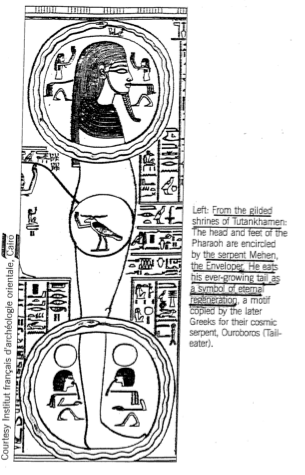

In ancient America,
QUETZALCOATL (Toltecs and Aztecs) meaning FEATHERED SERPENT, is the symbol of the WHITE BEARDED GOD. This is well recorded by the Indigenous people and also by the Catholic Priests (friars) who arrived here at the time period of the Spanish Conquest in 1519.
Why QUETZALCOATL? The indigenous people seem to have used SYMBOLS to record their history.
The most important part of the Book of Mormon is 3 Nephi and the coming of the Savior to the Americas. Logically this would be the part of their history that would be carried down over the centuries. As the Book of Mormon states, He descended down out of the heavens. The Native people therefore drew or carved the symbol of a man with wings of feathers. The Quetzal bird is their most beautiful bird, it has a long tail of feathers.
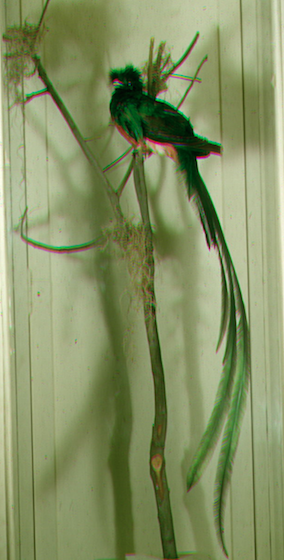
Why QUETZAL?
We read in 3 Nephi 11:8,9,10
8 And it came to pass, as they understood they cast their eyes up again towards heaven; and behold, they saw a Man descending out of heaven; and he was clothed in a white robe; and he came down and stood in the midst of them; and the eyes of the whole multitude were turned upon him, and they durst not open their mouths, even one to another, and wist not what it meant, for they thought it was an angel that had appeared unto them.
9 And it came to pass that he stretched forth his hand and spake unto the people, saying:
10 Behold, I am Jesus Christ, whom the prophets testified shall come into the world.
Why COATL?
This means serpent to the Aztecs and we have seen how symbolic it is to HEALING. So the kings, rulers, military leaders etc., all wanted to be associated with Quetzalcoatl, the feathered serpent.
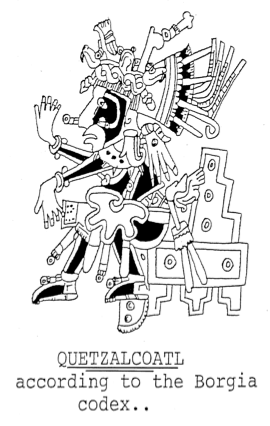





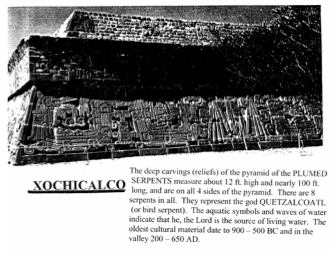
What is the relationship of the serpent symbol to the Book of Mormon and LDS doctrine?
I have over 20 texts written by the Indigenous people and Catholic priests at and after the Spanish Conquest which started in 1519.
Plausible Evidences
Laurette Sejourné was an archaeologist who did much of her work in Teotihuacán (just outside of Mexico City). This is where the pyramids of the Sun, Moon, and Quetzalcoatl are found. She wrote a separate text of 300 pages on Quetzalcoatl, these are 3 (out of countless) quotations.
…in many centers, the representations of death and of destructive deities were replaced by symbols of the resurrection, which ought not surprise anyone as the transcendence of QUETZALCOATL originates or comes from his role of the REDEEMER. This role is confirmed in all documents
Page 32 – “The celebrity of QUETZALCOATL surpassed or exceeded all the images of the ancient capital (Tenochtitlan) (Mexico City). In fact, he constituted the CENTRAL PERSONAGE in all the Meso-American history. No other name, even the most powerful emperors, can even remotely compare himself to Quetzalcoatl.
The role of Quetzalcoatl in the founding of the Náhuatl culture was never doubted by any of the historians of the 16th and 17th centuries, just as our era started with Christ, that of the Aztecs opened at the same time with Quetzalcoatl. His image is the FEATHERED SERPENT, and it (he) caused or evoked the same sensation, as did the crucifixion for the Christians. In the city of TENOCHTITLAN, he was the object of profound veneration or worship. Besides that, he was considered to be the creator of man, and his works.
Torquemada Born 1557, a Catholic Friar (and Historian) Volume 2, Page 48
Their God Quetzalcohuatl whom these people call the “God of Air” had many good things attributed to him. Quetzalcohuatl means FEATHERED SERPENT, or serpent who had plumage; this feathered serpent whose name was given to him by the Indians, was their god. This god was very celebrated or honored by those in the city of Cholulla and according to their history he was the priest in the city of Tula. …They say he was a white man, large of body, a beautiful wide forehead, large eyes, long black hair, a great round beard. These ‘naturals’ (indigenous Indians) say that he was the Great Artisan---they esteemed him highly. They revered him as the King. He governed as the Lord, called Huémac; on the spiritual and ecclesiastical side he was supreme.
“Many regarded him as God. His was a voice that exceeded all terms and human limits …Yes, in truth this voice was heard from a distance, it could not be a human voice etc.”
The source or origin of the serpent symbol seems to be in Numbers 21, about 1400 B.C.
The symbol of the feathered serpent appears to be the coming of the Lord to the American Continent recorded in 3 Nephi of the Book of Mormon. This includes the symbol for healing. The carrying down of this momentous historical event over the centuries, resounds in many or nearly all of the countries in the Western Hemisphere.
We read in 3 Nephi 17:6,7 and 9.
6 And he said unto them: Behold, my bowels are filled with compassion towards you.
7 Have ye any that are sick among you? Bring them hither. Have ye any that are lame, or blind, or halt, or maimed, or leprous, or that are withered, or that are deaf, or that are afflicted in any manner? Bring them hither and I will heal them, for I have compassion upon you; my bowels are filled with mercy.
8 For I perceive that ye desire that I should show unto you what I have done unto your brethren at Jerusalem, for I see that your faith is sufficient that I should heal you.
9 And it came to pass that when he had thus spoken, all the multitude, with one accord, did go forth with their sick and their afflicted, and their lame, and with their blind, and with their dumb, and with all them that were afflicted in any manner; and he did heal them every one as they were brought forth unto him.
We read in a current news magazine, the following:
Thirteen years before the millennium, an unusual man appeared on the shores of Mexico’s Yucatán peninsula. He had fair skin, wore his hair exuberantly untrimmed, and (most remarkably to the bare-chinned populace) sported a flowing black beard. In his homeland, legend had it; he had been known as a prince of peace. He was said to be fully man, yet fully god. His people believed he had died in an act of supreme self-sacrifice and that someday he would come again.
The Maya called the newcomer Kukulkan. The Toltecs, whom he had ruled before fate drove him into exile, knew him as Quetzalcoatl.
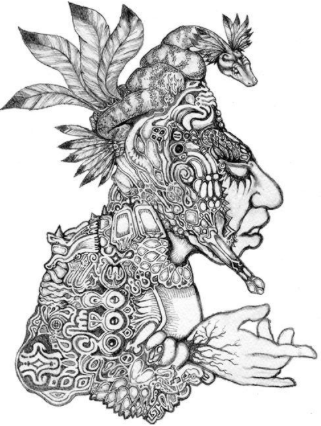
We conclude with the statement of the President of the Church, John taylor, in 1882…
The story of the the life of the Mexican divinity, Quetzalcoatl, closely resembles that of the Savior; so closely, indeed, that we can come to no other conclusion than that Quetzalcoatl and Christ are the same being.


